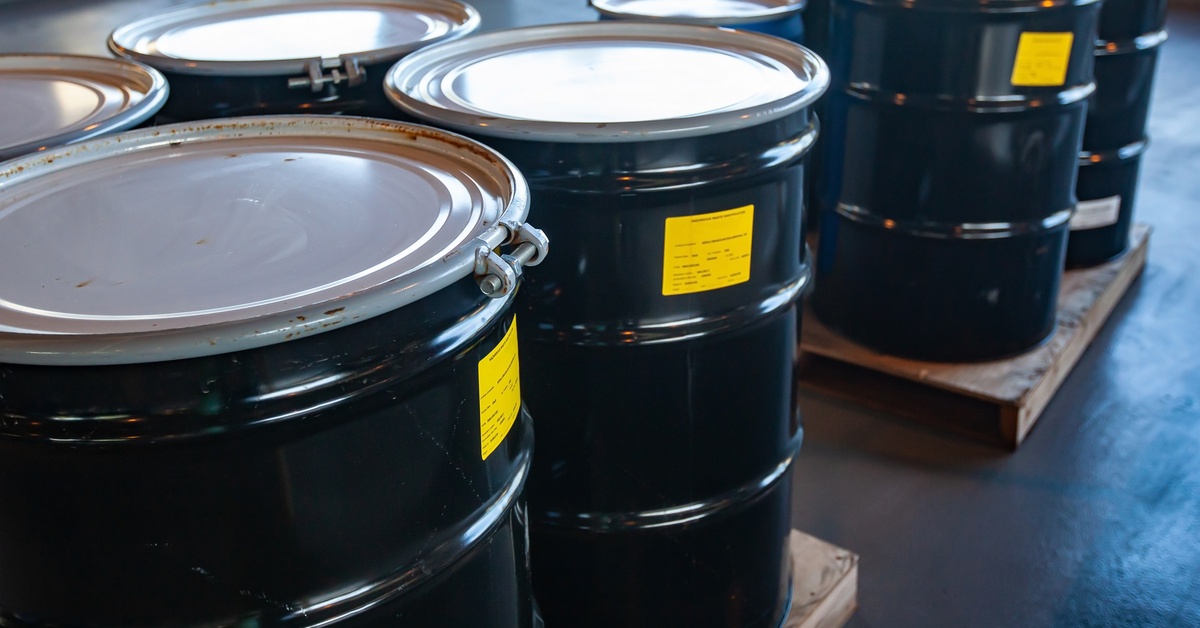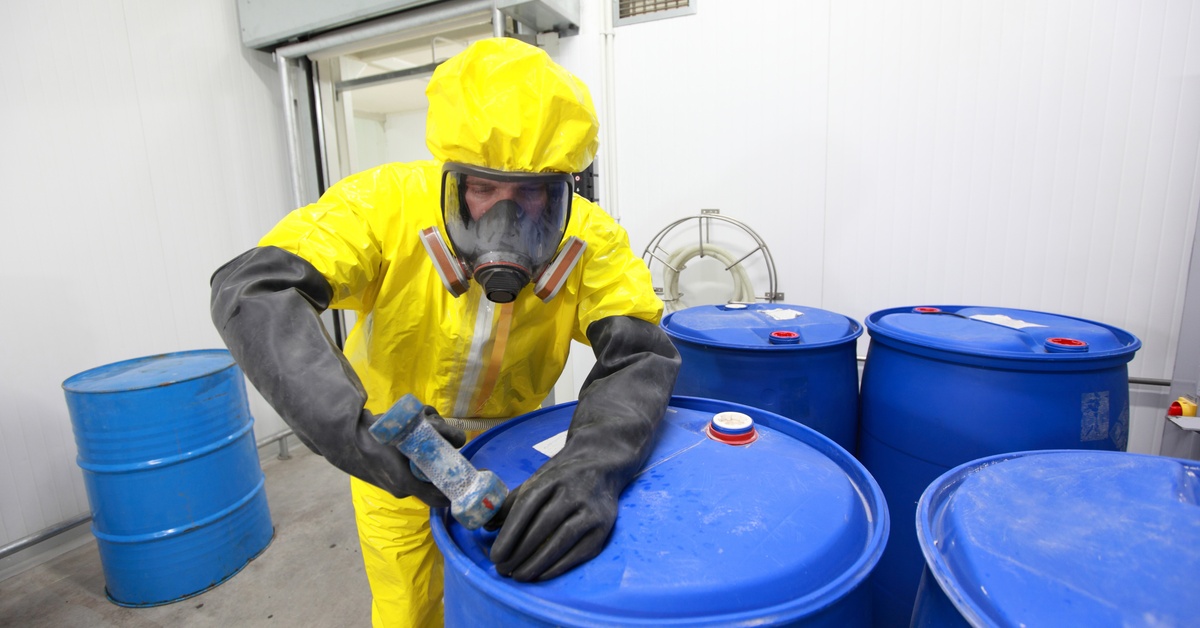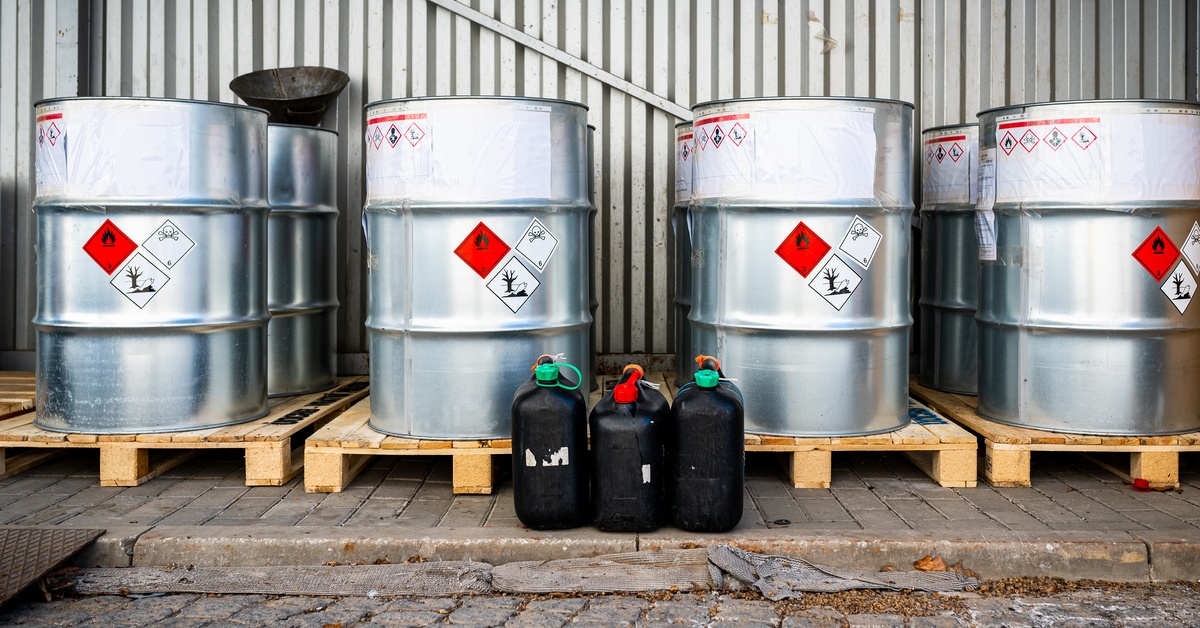Hazardous Waste Disposal in Large Facilities: What To Know

Extensive manufacturing facilities, warehouses, and industrial operations face complex challenges when managing hazardous materials. The scale of waste production, combined with stringent regulatory requirements, creates unique disposal needs that require specialized expertise.
Keep reading to learn what you need to know about hazardous waste disposal in large facilities, covering everything from proper classification and storage to compliance paperwork and cost-effective removal strategies. Understanding these key points helps protect your operation from costly violations while upholding environmental responsibility.
Understanding Hazardous Waste Classification for Large Operations
Hazardous waste falls into two primary classifications that determine disposal requirements.
Characteristic waste exhibits specific hazardous properties: ignitable materials that catch fire easily, corrosive substances that corrode metal or skin, reactive materials that can explode or produce toxic gases, and toxic waste that harms both human health and the environment.
Listed waste appears on the EPA’s catalogs based on source and composition. F-listed waste originates from common industrial processes, such as metal cleaning or petroleum refining.
K-listed waste originates from specific industries: wood preserving, petroleum refining, or pesticide manufacturing. P- and U-listed waste includes discarded commercial chemical products, with P-list materials considered acutely hazardous.
Storage Requirements for High-Volume Facilities
High-volume facilities must adhere to strict regulations for managing hazardous waste to ensure environmental and public safety. Proper storage is crucial for compliance and minimizing risks such as leaks, spills, and other hazards.
Container Management Standards
Effective container management prevents accidents and ensures compliance with regulations. Containers must be in good, leak-free condition and require weekly inspections. Waste and container materials must be compatible to avoid reactions. Secondary containment (e.g., berms, pallets) is crucial for catching spills and protecting the environment.
Labeling and Documentation Systems
All waste containers must be clearly labeled with their contents, hazard warnings, and the date accumulation began. This start date is critical for disposal timelines, which are 90 days for large quantity generators and longer for smaller ones. Standardized labeling and tracking systems are essential for managing waste pickups and ensuring compliance.
Tank Storage Considerations
Large operations store hazardous waste in specialized tanks that detect leaks and contain spills. Tanks require daily visual inspections and annual professional assessments, with all activities thoroughly documented for compliance purposes.

Transportation and Disposal Partnerships
Selecting qualified transporters is vital to avoid liability. Licensed haulers need proper insurance, safe vehicles, and knowledge of waste regulations. Transportation manifests are crucial for tracking waste from generation to disposal, documenting custody, and ensuring legal protection. Accurate forms prevent delays and regulatory issues.
TSDFs need specific permits for waste types they handle, often focusing on incineration or recycling. Costs include transportation, treatment, and acceptance. Nearby facilities can lower transport costs but may have higher fees. It’s crucial to assess total disposal costs considering these factors.
Compliance Documentation and Record Keeping
Proper hazardous waste disposal requires careful planning and strict adherence to regulations to protect the environment and meet legal requirements. It’s crucial to understand the procedures, costs, and obligations involved in waste management to prevent potential risks and liabilities. The following are key aspects to consider when managing hazardous waste effectively.
Manifest System Management
Hazardous waste manifests create cradle-to-grave tracking for every shipment. Generators must retain copies for a minimum of three years, with many facilities maintaining more extended retention periods for added protection.
Electronic manifesting systems streamline paperwork and reduce errors. These systems automatically calculate fees, track shipment status, and maintain digital records, simplifying regulatory reporting.
Biennial Reporting Requirements
Large quantity generators submit biennial reports to the EPA by March 1st of even-numbered years. These reports summarize waste generation, management methods, and disposal locations for the previous two years.
Data collection throughout the year makes report preparation manageable. Monthly summaries of waste types, quantities, and disposal methods provide the foundation for accurate biennial reports.
Personnel Training Documentation
Employee training records demonstrate compliance with personnel qualification requirements. Training must cover general facility operations, emergency procedures, and specific protocols for handling waste.
Annual refresher training keeps personnel current on regulatory changes and reinforces safety procedures. Documentation should include training dates, topics covered, and the names of attendees for each session.

Cost Management Strategies for Large Volume Waste
Effective cost management for large-volume waste depends on essential strategies. Source reduction, achieved through process modifications, material substitutions, and improved inventory control, minimizes waste at its source. Recycling initiatives help recover valuable materials and reduce disposal expenses; hazardous wastes, such as solvents, metals, and acids, often have recycling markets that can offset their costs.
Coordinating multiple pickups reduces transportation costs per pound. Regular scheduling aligns with production cycles, avoiding emergency disposal fees. Waste segregation is equally essential, as it maximizes disposal options and lowers overall costs. Mixing compatible waste streams decreases per-unit expenses, and proper segregation prevents contamination that increases treatment costs.
Emergency Preparedness and Spill Response
Large facilities must maintain emergency response plans covering potential accidents, spills, and natural disasters. These plans include evacuation procedures, emergency contact information, and cleanup protocols.
Emergency equipment must remain accessible and properly maintained at all times. Spill response kits, fire suppression systems, and personal protective equipment require regular inspection and replacement schedules to ensure optimal performance and safety.
Employee Safety Training
Workers handling hazardous waste require specialized safety training that covers the use of personal protective equipment, emergency procedures, and health hazards associated with the waste. Training frequency depends on job responsibilities and the level of exposure to waste.
Medical surveillance programs monitor worker health when exposure risks exist. These programs include baseline health assessments, periodic examinations, and documentation of exposure.
Work With Experienced Waste Management
Collaborating with regulations management experts in waste handling provides specialized knowledge that internal facility teams often lack. These professionals manage compliance, documentation, and logistics, enabling facilities to concentrate on their core activities. Service providers deliver solutions such as waste profiling, container supply, transportation, and disposal. This integrated approach simplifies processes and guarantees compliance.
Hazardous waste disposal in large facilities requires more than basic regulatory compliance. It demands systems that protect workers, communities, and the environment, all while supporting business operations. Professional partnerships offer the expertise and resources essential for effective large-scale waste management.
Professional Waste Management: Operational Protection
Large facility waste management requires specialized knowledge, equipment, and partnerships that many operations cannot maintain cost-effectively in-house. Working with an experienced hazardous waste disposal company provides assurance of compliance while allowing your team to focus on core business activities.
Contact Clean Management today for expert hazardous waste disposal services tailored to large facilities. Schedule a consultation with our specialists to discuss your specific waste management needs and develop tailored compliance solutions that meet the requirements of your facility.
